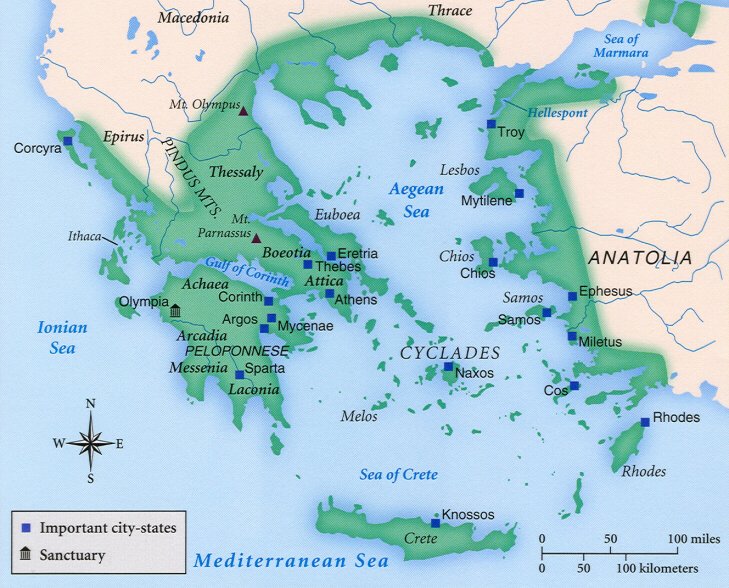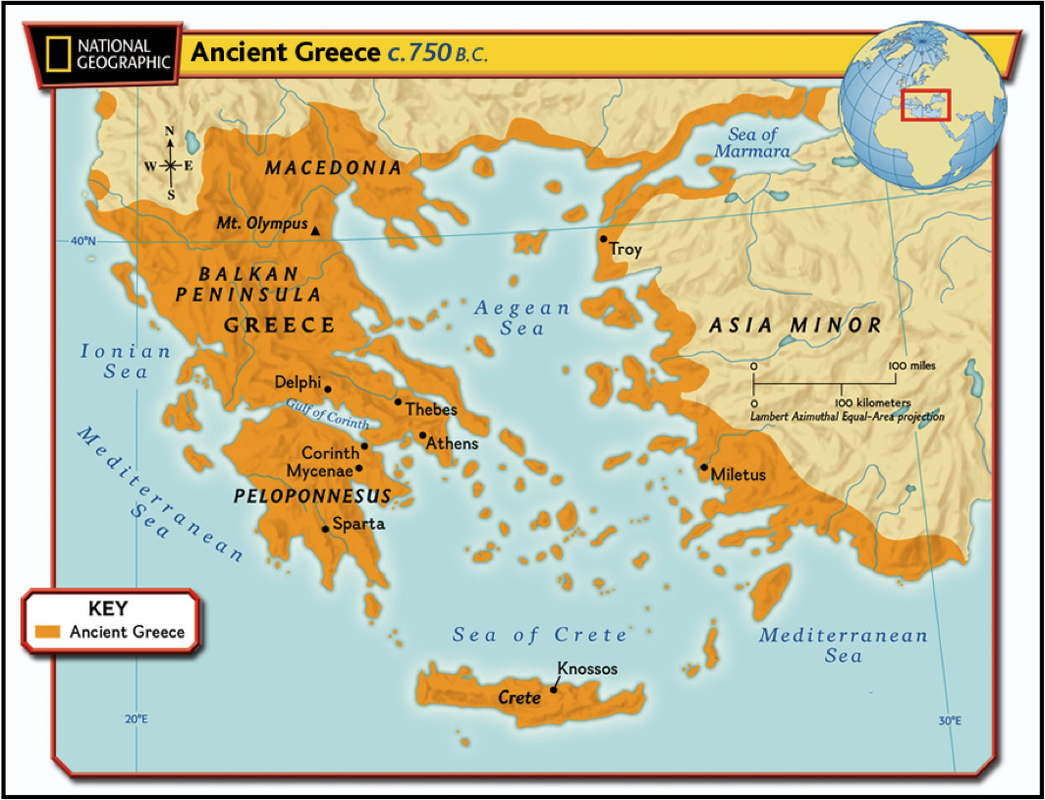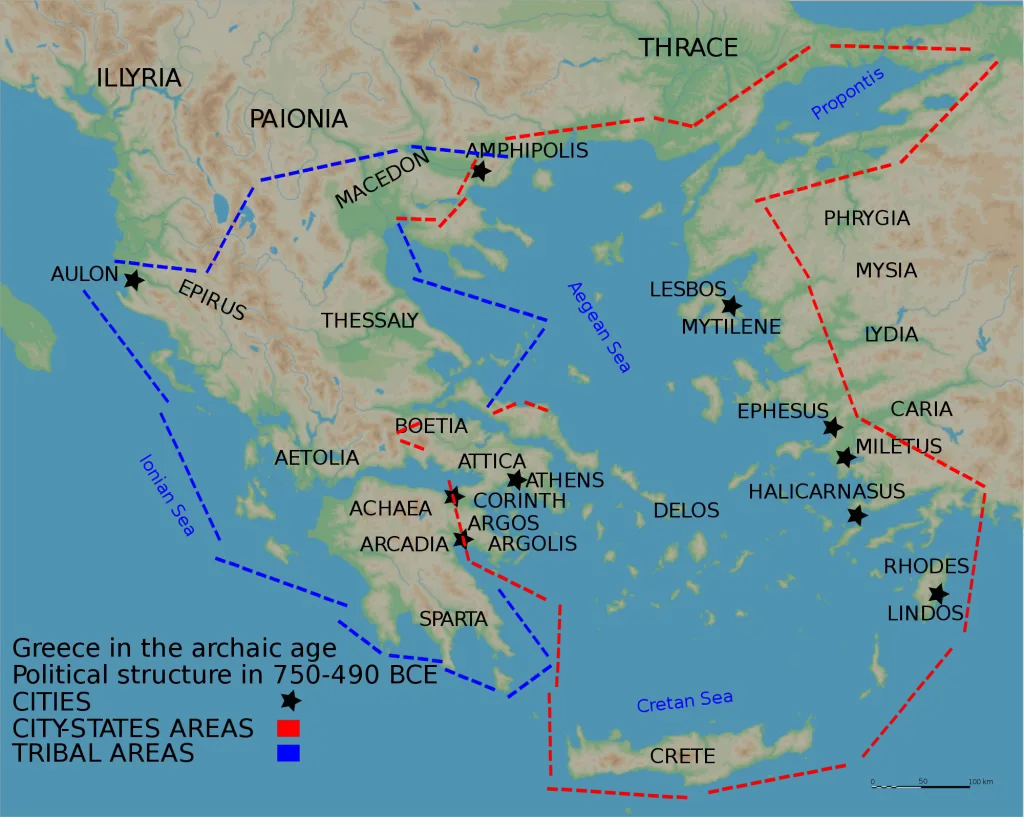
What is an Ancient Greek City State? A Quick Guide for KS2
Ancient Greece - The City-States - Google My Maps Descriptions of six city-states in Ancient Greece. Descriptions of six city-states in Ancient Greece. Sign in Open full.

Ancient Greek city state map Ancient Greek Pinterest
Ancient Greece was comprised of hundreds of essentially independent city-states, partly due to the geography of Greece. Communities were separated by mountains, hills, and water. Rather than a unified nation, Ancient Greece was more like a network of communities with a shared religion and language that sometimes led to a sense of common belonging.

The Greek World from the Bronze Age to the Roman Conquest Brewminate
Ancient maps of Sparta, Thebes, Athens, Corinth, Argos, Mycenae, Knossos, Gortys, Phaestos, Pella, Potidea, Halicarnassus, Miletus, Ephessus, the area of Ilium and map of Ancient Troy.

greek city states Ancient Greece
Here is an Ancient Greece map, featuring how the country was like in the ancient times, during the peak centuries of its history.In this map of Ancient Greece, you can spot the various regions of the mainland, the islands in the Aegean and the Ionian Sea as well as the Greek colonies in Asia Minor, a region that was first settled by Greek towns in the 8th century AD and were continuously.

Ancient Greece CityStates and Ethnic Groups Maps of Greece
List of ancient Greek cities 9 languages Tools From Wikipedia, the free encyclopedia This is an incomplete ancient Greek, including colonies outside Greece. Note that there were a great number of Greek cities in the ancient world. In this list, a city is defined as a single population center.
:max_bytes(150000):strip_icc()/History_of_Greece_for_High_Schools_and_Academies_1899_14576880059-9b79528371d3443089862b67a1fbc002.jpg)
30 Maps That Show the Might of Ancient Greece
There grew to be over 1,000 city-states in ancient Greece, but the main poleis were Athína (Athens), Spárti (Sparta), Kórinthos (Corinth), Thíva (Thebes), Siracusa (Syracuse), Égina (Aegina), Ródos (Rhodes), Árgos, Erétria, and Elis. Each city-state ruled itself. They differed greatly from the each other in governing philosophies and interests.

The participative democracy of Greek city states
Ancient Greece ( Greek: Ἑλλάς, romanized : Hellás) was a northeastern Mediterranean civilization, existing from the Greek Dark Ages of the 12th-9th centuries BC to the end of classical antiquity ( c. 600 AD ), that comprised a loose collection of culturally and linguistically related city-states and other territories.

1. Classical Greece and Rome A Brief History The Mind Attic
This map shows some of the many city-states of ancient Greece and includes the places that various characters from The Iliad and the Odyssey are supposed to have come from. Image credit: Wikipedia, Creative Commons 3.0 license, Pinpin This instability was the context for the emergence of Greek city-states.

Social and Political Structure of Ancient Greek CityStates
The political maps of ancient greece provide a glimpse into the divisions and boundaries of city-states like athens, sparta, and thebes. These city-states exerted their influence not only over the immediate territories surrounding them but also through control over other regions and alliances with neighboring cities.

Greek CityStates, 750 B.C. Ancient greece, Greece, Greece map
World 500 BC Europe 500 BC Greece.. 500 BC Neighbouring maps Turkey - 500 BCE Italy - 500 BCE What is happening in Greece and the Balkans in 500BCE The region of Greece and the Aegean Sea is fragmented into steep mountains and valleys, as well as many small islands.

Maps of Ancient Greece 6th Grade Social Studies
1200 BCE - 323 Major Events: Hellenistic age Greco-Persian Wars Peloponnesian War Classical antiquity Battle of Thermopylae (Show more) Key People: Aristotle Socrates Plato Euripides Pericles Related Topics: Olympic Games Greek religion Greek mythology

Map of Ancient Greece Ancient greece, Ancient greece history, Ancient
On this map of ancient Greece, Ephesus is a city on the east side of the Aegean Sea. This ancient Greek city was on the coast of Ionia, close to present-day Turkey. Ephesus was created in the 10th century B.C. by Attic and Ionian Greek colonists. 04 of 30 Greece 700-600 B.C. The Historical Atlas by William R. Shepherd, 1923.

Antike Griechische StadtStaatenmap Karte des antiken Griechenlands
Sparta was one of ancient Greece's largest and most powerful city states. It was an almighty powerhouse, with the strongest army of any city state in the whole of ancient Greece. In fact, all Spartan men were expected to become soldiers, and trained from a young age. They also enjoyed sports, including footraces.

Geography and History Cortadura 1st ESO Unit 3. Ancient Greece (2nd
KS2 Ancient Greece: 1. Everyday life in the city-states BBC Teach > Primary > KS2 History > Ancient Greece City-states > Gods > Culture > Olympic Games > Legacy of Ancient.

History of Ancient Greece Fun Facts For Kids Savvy Leo
Map of Ancient Greek city states and regions of Ancient Greece. Ancient maps of Sparta, Thebes, Athens, Corinth, Argos, Mycenae, Knossos, Gortys, Phaestos, Pella, Potidea, Halicarnassus, Miletus, Ephessus, the area of Ilium and map of Ancient Troy. Ancient Greece and its cultural heritage significantly influenced not only modern Greek culture.

Ancient Greece Lessons Tes Teach
Philip of Macedon's defeat of the Greek city-states is traditionally seen as drawing down the curtain on "Classical Greece" and ushering in the "Hellenistic Age". This includes the conquests of Alexander the Great, and ends with the conquests of the different Hellenistic states by Rome (146-31 BC).. The history of Ancient Greece falls into four major divisions.